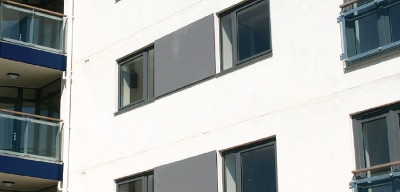 Specialists branching out from fitting interior partition systems to the world of light gauge steel framing can find that there are a significant number of transferable skills between the two disciplines. There are also many rules unique to the latter which must be observed and adopted and which specialists cannot afford to ignore or take lightly. FPDC’s Steve Halcrow considers the requirements of steel frame systems (SFS).
Specialists branching out from fitting interior partition systems to the world of light gauge steel framing can find that there are a significant number of transferable skills between the two disciplines. There are also many rules unique to the latter which must be observed and adopted and which specialists cannot afford to ignore or take lightly. FPDC’s Steve Halcrow considers the requirements of steel frame systems (SFS).
I am pleased to say that as I go around sites now I am seeing what in my opinion is an improved and improving standard of fixing of light gauge steel framed systems. There are still however too many fundamental errors being made which appear largely to stem from assumptions being made that if something works for internal drywall then it must be okay to do it the same
way on SFS systems.
Simple examples of this include:
• Inadequate fixing of studs to tracks where required
• Improper forming of deflection head details
• Insufficient framing of openings
• Incorrect fixing of SFS frames to surrounding structure
Quite simply we MUST make sure that the operatives we are asking to fix these systems are suitably qualified and experienced and we must put in place more stringent and dedicated checking procedures to make sure things are not missed.
I will resist the temptation to apologise for repeating these warnings, because it is vital we get this right and I still believe there is considerable room for improvement. As so often with such things we are highlighting critical points and in doing so I do not which to imply that there isn’t plenty of good practice out there; our challenge is getting this to be the base level of competence and to get the entire workforce to that standard to ensure quality and consistency.
Taking the main points above in order:
a) Metal-to-metal connections: in most non-load bearing internal drywall partitions there is no need to mechanically fix where studs and channels intersect; in much of SFS it is the opposite. If it says “three wafer head screws per connection” then that is what it must be, and of the correct type. I have witnessed these missed out on many a site visit and I have also seen excessive movement in a finished system that appeared to result from their omission. Potentially this is a catastrophic situation; at the very least it can contribute to cracking and other issues.
b) Deflection heads in SFS follow the same principles as for drywall but with very different detailing. It is of the utmost importance that these are formed correctly as recommended by the manufacturer in question. There is a little latitude in forming these in non-load bearing walls, far less in SFS.
c) One of the most critical details of all, there are numerous configurations depending on the size of opening and loading condition. I frequently see operatives fixing them the wrong way because their way is “the one we have done loads of times before” – such assumptions are dangerous.
d) Fixing to structure: the most common mistake I encounter in this regard is the use of too few and/or the wrong type of fixings. This is what holds the whole panel in place under significant loads, so is once again vital. Also these details must be carefully formed as often, depending upon the design strategy in place, we may also be forming air seals and water-tight details, so the correct construction of these is pivotal to the ultimate result.
To many of you this may seem blindingly obvious, but my observation is this: whilst most of these issues are picked up and addressed at design and preconstruction phases, they can easily get overlooked when the hurly-burly of installation starts, with tight programmes and commercial considerations.
The answer lies in solid checking procedures. Make sure the people involved – operatives and particularly supervisors – are all thoroughly briefed and properly trained, and supply them with checklists to reduce the chances of them missing or forgetting anything.
FPDC members will be able to access some suggested checklist templates via the members’ area of the FPDC website. If you have any queries or comments please get in touch with me through the usual channels.


